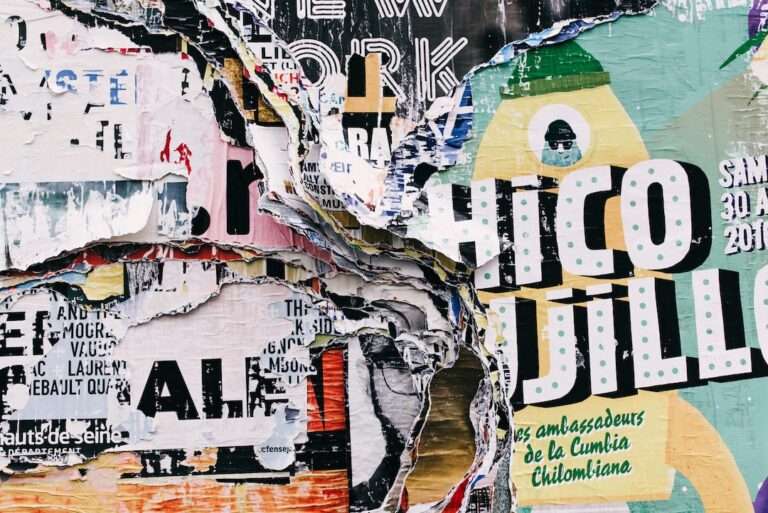Street Art: Exploring Symbolism in Urban Art

Street art is a form of artistic expression that is created in public spaces, typically using various techniques such as graffiti, stenciling, wheatpasting, muralism, and 3D street art. It is often seen as a rebellious and underground art form that challenges traditional notions of art and the confines of the gallery space. Street art has a long and rich history, dating back to ancient civilizations, but it has gained significant prominence in contemporary society.
The origins of street art can be traced back to ancient civilizations such as the Egyptians and the Romans, who used public spaces to express their ideas and beliefs through art. However, it was not until the 20th century that street art as we know it today began to emerge. In the 1960s and 1970s, graffiti became a popular form of expression among marginalized communities in New York City. Artists such as Jean-Michel Basquiat and Keith Haring used graffiti to make political and social statements, often addressing issues such as racism, poverty, and inequality.
Street art has become an important part of contemporary society because it allows artists to engage with the public in a way that traditional art forms cannot. It brings art out of the confines of the gallery space and into the streets, making it accessible to a wider audience. Street art also has the power to transform public spaces, turning them into vibrant and dynamic environments that reflect the culture and identity of a community. It can also serve as a form of protest or resistance against social and political injustices.
Understanding the Different Styles of Street Art
There are several different styles of street art, each with its own unique characteristics and techniques. Graffiti is perhaps the most well-known style of street art, characterized by its bold lettering and vibrant colors. Graffiti artists use spray paint to create their works, often covering large surfaces such as walls and buildings. Stencil art is another popular style of street art, which involves creating a design on a stencil and then using spray paint to transfer the design onto a surface. This technique allows artists to create intricate and detailed images.
Wheatpasting is a technique that involves pasting paper or posters onto surfaces using a mixture of wheat flour and water. This style of street art is often used to convey political or social messages, as the posters can be easily removed or replaced. Muralism is a style of street art that involves painting large-scale murals on walls or buildings. Muralists often work with communities to create artworks that reflect the culture and identity of the area. 3D street art, also known as anamorphic art, is a style of street art that creates the illusion of three-dimensional objects on a two-dimensional surface. Artists use perspective and shading techniques to create these optical illusions.
Deciphering the Messages Behind Street Art
One of the most intriguing aspects of street art is the messages and meanings behind the artworks. Street artists often use symbolism to convey their ideas and beliefs, making their works open to interpretation by the viewer. Symbolism can be seen in the use of certain images, colors, and motifs in street art.
Symbolism in street art can be used to convey political and social commentary. Many street artists use their works to address issues such as inequality, racism, and environmental degradation. For example, Banksy, one of the most famous street artists in the world, often uses his artworks to criticize capitalism and consumerism. His iconic image of a girl releasing a heart-shaped balloon has been interpreted as a commentary on the fleeting nature of love and happiness in a materialistic society.
Street art is also a form of personal expression for many artists. It allows them to share their thoughts, emotions, and experiences with the world. Some artists use their works to explore their own identities and to challenge societal norms and expectations. For example, the artist Swoon often creates portraits of women that challenge traditional notions of beauty and femininity. Her works celebrate the strength and resilience of women, while also addressing issues such as gender inequality and violence against women.
The Role of Symbolism in Urban Art
Symbolism plays a crucial role in street art, as it allows artists to convey complex ideas and emotions in a visual and accessible way. There are several common symbols that can be found in street art, each with its own unique meaning.
One of the most common symbols in street art is the heart. The heart is often used to represent love, compassion, and unity. It can also be used to symbolize the human condition and the universal desire for connection and belonging. Another common symbol is the crown, which is often used to represent power, authority, and leadership. The crown can also be seen as a symbol of oppression and inequality, as it is often associated with monarchies and hierarchical systems.
Animals are also commonly used symbols in street art. Birds, for example, are often used to represent freedom, hope, and transcendence. They can also symbolize the human desire for flight and escape from the constraints of everyday life. Other animals such as wolves, lions, and snakes are often used to represent strength, courage, and resilience.
The Cultural and Political Significance of Street Art
Street art has a deep cultural and political significance, as it reflects the social issues and concerns of a particular time and place. Street artists often use their works to address issues such as inequality, racism, poverty, and environmental degradation.
Street art can be seen as a form of protest against social and political injustices. It allows artists to express their dissent and to challenge the status quo. For example, during the Arab Spring protests in 2011, street art played a crucial role in mobilizing and inspiring the masses. Artists used their works to criticize corrupt governments, to demand social justice, and to express the hopes and aspirations of the people.
Street art also reflects the cultural identity of a community. It can be seen as a form of cultural expression that celebrates the history, traditions, and values of a particular group of people. For example, in Mexico City, street art is often used to celebrate indigenous cultures and to challenge the dominant narratives of Mexican history. Artists use their works to reclaim public spaces and to assert their cultural heritage.
The Use of Color in Street Art and Its Meanings

Color plays a crucial role in street art, as it can evoke emotions, convey meaning, and create visual impact. Different colors have different psychological effects on the viewer, and street artists often use color strategically to enhance the message or mood of their artworks.
Red is often associated with passion, energy, and power. It can also symbolize danger or warning. Many street artists use red to draw attention to their works or to convey a sense of urgency. Blue is often associated with calmness, tranquility, and stability. It can also symbolize sadness or melancholy. Street artists often use blue to create a sense of serenity or to evoke a contemplative mood.
Yellow is often associated with happiness, optimism, and creativity. It can also symbolize caution or warning. Many street artists use yellow to create a sense of joy or to convey a positive message. Green is often associated with nature, growth, and harmony. It can also symbolize envy or jealousy. Street artists often use green to convey a sense of balance or to highlight environmental issues.
The Impact of Street Art on Society and the Art World
Street art has had a profound impact on society and the art world. In recent years, there has been a shift in perception towards street art, with many people recognizing it as a legitimate form of artistic expression. Street art has also gained significant prominence in the art world, with many street artists being recognized and celebrated for their works.
Street art has the power to transform public spaces and to create a sense of community. It can turn dull and lifeless walls into vibrant and dynamic environments that reflect the culture and identity of a community. Street art can also serve as a form of protest or resistance against social and political injustices. It allows artists to express their dissent and to challenge the status quo.
In the art world, street art has become increasingly recognized and valued. Many street artists have transitioned from the streets to galleries and museums, with their works being bought and sold for significant sums of money. Street art has also inspired other art forms, such as fashion, music, and design. Many fashion designers, musicians, and graphic designers draw inspiration from street art in their work.
The Evolution of Street Art and Its Future
Street art has evolved significantly over the years, thanks in part to advancements in technology. Artists now have access to new tools and techniques that allow them to create more intricate and detailed works. For example, digital technology has allowed artists to create 3D street art that appears to come alive when viewed from a certain angle.
The future of street art is uncertain, but it is likely to continue evolving and adapting to new technologies and social trends. Street art has always been a form of artistic expression that reflects the concerns and aspirations of a particular time and place. As society changes, so too will street art.
The Importance of Context in Interpreting Street Art
Context plays a crucial role in interpreting street art. The location of an artwork can significantly impact its meaning and message. For example, an artwork that is placed in a marginalized or neglected neighborhood may be seen as a form of protest against social inequality or urban decay. On the other hand, an artwork that is placed in a wealthy or gentrified neighborhood may be seen as a form of gentrification or cultural appropriation.
The role of the viewer is also important in interpreting street art. Each viewer brings their own experiences, beliefs, and biases to the artwork, which can influence their interpretation. Street art is often open to multiple interpretations, and different viewers may see different meanings in the same artwork.
Street Art and Its Connection to Other Art Forms
Street art is closely connected to other art forms, such as graffiti, muralism, and contemporary art. Graffiti, in particular, has had a significant influence on street art, with many street artists starting out as graffiti writers. Muralism has also played a crucial role in the development of street art, with many street artists creating large-scale murals that transform public spaces.
Street art has also made its way into galleries and museums, blurring the boundaries between street art and contemporary art. Many street artists have transitioned from the streets to galleries, with their works being exhibited alongside traditional forms of art. This has sparked debates about the commercialization and commodification of street art.
Conclusion
Street art is a powerful form of artistic expression that has gained significant prominence in contemporary society. It allows artists to engage with the public in a way that traditional art forms cannot. Street art reflects the social issues and concerns of a particular time and place, often addressing issues such as inequality, racism, poverty, and environmental degradation. It has the power to transform public spaces and to create a sense of community. Street art has also had a profound impact on the art world, with many street artists being recognized and celebrated for their works. As society continues to evolve, so too will street art, adapting to new technologies and social trends. Street art has the potential to inspire change and to challenge the status quo.
If you’re interested in exploring the fascinating world of street art symbolism, you might also enjoy delving into the symbolism of the star. In an article by Symbolism Hub, they delve into the various meanings and interpretations associated with this celestial symbol. From representing guidance and hope to embodying spirituality and enlightenment, the star holds a significant place in many cultures and belief systems. To learn more about the symbolism of the star, check out this insightful article: Symbolism of the Star.
FAQs
What is street art?
Street art is a form of visual art created in public locations, usually executed outside of the context of traditional art venues.
What is the purpose of street art?
Street art can serve a variety of purposes, including self-expression, political commentary, and beautification of public spaces.
What is street art symbolism?
Street art symbolism refers to the use of symbols and imagery in street art to convey meaning and messages to viewers.
What are some common symbols used in street art?
Common symbols used in street art include animals, political figures, pop culture icons, and abstract shapes and patterns.
What is the significance of street art symbolism?
Street art symbolism can be used to communicate messages and ideas that may not be easily expressed through words alone. It can also serve as a form of cultural commentary and critique.
Is street art legal?
The legality of street art varies depending on location and context. Some forms of street art may be considered vandalism and subject to legal consequences, while others may be permitted or even commissioned by local authorities.
What is the difference between street art and graffiti?
While both street art and graffiti involve creating art in public spaces, graffiti is typically associated with unauthorized and often illegal markings, while street art may be created with permission or as part of a sanctioned public art project. Additionally, street art often incorporates more complex imagery and symbolism than traditional graffiti.





